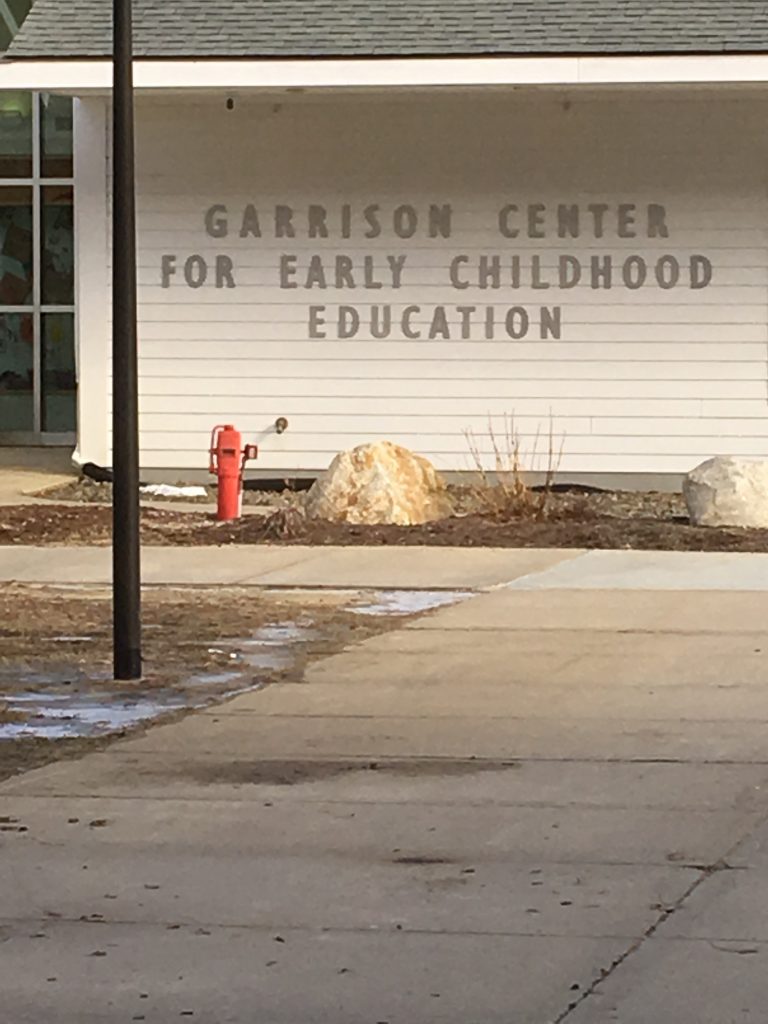By Gabriela Villa | Observer Contributor

Photo by Thomas Hill Jr.
The Garrison Center is a federally licensed and accredited preschool available to students and faculty with children.
According to Laura Cameron, teacher supervisor at the Garrison Center, teachers tailor the curriculum to each child’s needs, based on where they need more attention, or where they demonstrate ability or interest.
Part of the curriculum incorporates a program called “Seeds of Stem” which consists of two week-long studies, according to Cameron. The first week is called “Science Week” when children are taught concepts such as “sink or float.” The next week is called “Problem Week” where they are presented with a problem and need to use what they learned in science week to solve the problem.
In the example of sink or float, the kids are presented with the problem of how to get cookies across water without getting the cookies wet. They devise plans and construct flotation devices to get the cookies across the water. If the plan fails, they revise it and try again.
Along with math, science, and literacy objectives, the center also has social and emotional objectives such as establishing and sustaining positive relationships and participating constructively in group situations.
Teachers use the same model of problem solving from science studies to work kids through social and emotional problems. For example, if a child has a problem with sharing toys, teachers will go over and ask them “What is the problem?” and “What is the solution?” This is meant to empower children to work through problems.
Cameron has a son who went to the Garrison Center for a year and a half, and has moved on to kindergarten, and a daughter who attends the preschool now.
“I knew as soon as I started here I could just hear passion in their voices. They’re not just acting; that I had to pull my kids from where they were and put them here,” said Cameron.
“We really have the cream of the crop here with the teachers.”
Since being at the Garrison Center, Cameron said her kids have thrived socially and emotionally. They also built relationships with peers and other adults, and being in a large group setting has prepared them for kindergarten.
Alexis Johnston, a 19 year-old early childhood education major, observed teachers at the Garrison Center for her class.
Through her observations, she evaluated the environment of the classrooms and the teachers’ teaching styles, ranking their quality and effectiveness.
She connected many of her observations to the theorist Maria Montessori, who created an approach to learning that emphasizes active learning, independence, cooperation, and learning that is tailored to each child’s unique pace of development.
“It’s not just about teaching per se, it’s about making an impact on the future of the kids you teach,” said Johnston.
Johnston said she let teachers read her notes on her observations, and gave them feedback on what they are doing well in terms of their styles of teaching.
Environmentally, Johnston evaluated how kid-friendly the spaces were – whether things hanging on the wall were eye-level to children and if there were enough mirrors in the classroom. “It is important for children to look at themselves at this age because it allows them to reflect on who they are and who they want to be,” said Alexis.
Most of the teachers are Early Childhood Education MWCC alumni.
According to Emily Verock, Family Development Coordinator at the Garrison Center, children from low income families or family members with disabilities get first consideration for the preschool.
Student parents don’t have to go to school full-time in order for their children to qualify, but depending on the number of classes they are taking, the cost can be reduced.
There are eight full-time faculty members, six teachers, and many other student-teachers since it is a “lab classroom” for Early Childhood Education students.
Comments are closed.